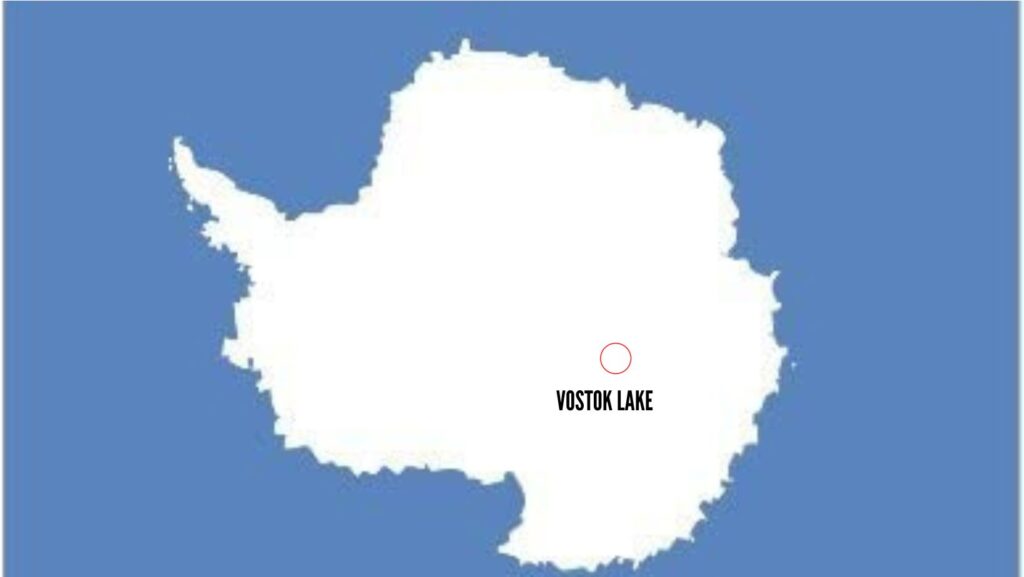What is hidden in Lake Vostok? The mysteries of Lake Vostok in East Antarctica
In the 1970s, a group of British researchers hypothesized the existence of a subglacial lake, which led to the emergence of the talk about the Lake Vostok mysteries.
The lake is located in the Vostok area, precisely under the Russian base called Vostok. The existence of the lake was confirmed in the 1990s. It is located at a depth of 3,800 meters under an ice sheet almost 4 km high, and is estimated to have formed over a period of 15 million years.
Although the Vostok area is one of the coldest on the continent with a minimum temperature of as low as -89 degrees Celsius, the water in the lake is in a liquid state. The lake is 250 km long and 50 km wide, with a depth of more than 400 meters, making it the sixth largest lake on Earth. The water temperature is maintained at -3 degrees Celsius, but does not freeze due to the high pressure of the ice sheet above and the heat of the earth below.
Sixty million years ago, Antarctica was attached to Australia and enjoyed a subtropical climate. It then separated itself and moved southward, where the extremely cold climate covered it with ice, making it what it is today. About 15 million years ago, ice covered the surface of Lake Vostok, and the lake has remained isolated from the Earth’s atmosphere and sunlight ever since.
Various positions exist as to what kind of life could exist down there. Some say that no organism could live in that cold, dark environment, with an atmospheric pressure 360 times that of Earth. Others believe that certain microorganisms have shown that they can live anywhere, even in volcanic vents at the bottom of the ocean or in the ice of the Arctic.
Expedition under the ice
In 2012, a scientific expedition made up of Russian, American and French researchers drilled through the ice and descended as deep as 3,768 meters, stopping when they were less than 100 meters from the lake’s water. Why did they stop? According to their story, they were afraid that, although they had taken all the necessary precautions, they could contaminate the lake’s ecosystem which would have unimaginable consequences.
However, there are those who say that the fear was the opposite, that the scientists became contaminated with an unknown microorganism, which could be fatal for them and for mankind. The fear was understandable, as they were entering an environment that had been sealed for millions of years where there could be bacteria or viruses that our immune system would not be able to combat.
Regarding the expedition, there had been a lot of controversy among environmentalists about using Freon gas and kerosene to drill through the ice. They feared that this could not only contaminate the lake, but probably also a network of interconnected subway rivers under the ice sheet.
The next expedition plans to send a robot to the surface of the lake. Will they find new forms of life, or never before seen organisms? For now, Lake Vostok continues to hold all its secrets.
After the expedition, the scientists analyzed the microorganisms they found on the way to the lake. They found 3,500 different species in four ice samples taken at a depth of 3,500 meters and sent to the University of Bowling Green in Ohio. These are not living organisms, only the DNA of these organisms was found. It is said that 94% belong to bacteria and the remaining 6% to eukaryotic cells, which are cells like the ones in animals and plants.
Other mysteries of Lake Vostok
Since then, there has been little reported on the Lake Vostok case. The only known information is that it is forbidden to fly over the Vostok area, allegedly because of a magnetic anomaly, although this has fueled a lot of suspicions.
Then, there is the mysterious claim that two Australian female researchers reported witnessing a strange phenomenon in the Vostok area. It is said that they were forcibly taken away by U.S. soldiers and have not been heard from again. What did the two women see, and what happened to them?
For the time being, the mystery of Lake Vostok remains unsolved. But Vostok is just one of Antarctica’s mysteries. The continent still has many exciting stories to tell.

